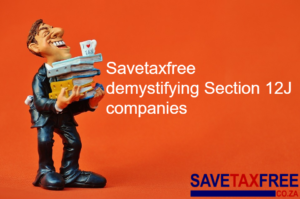Standard & Poor Top 50 ETFs August 2018: CoreShares S&P and NewFunds S&P Givi Top 50
Related Articles
ETF ANALYSIS
Standard & Poor Top 50 ETFs August 2018: CoreShares S&P and NewFunds S&P Givi Top 50
Performance review: The financial sector has been competitive over the past five years, with the financial index returning an average of 14.81% a year against -2.44% for the resources index and 16.7% for the industrials index. Positive performances from Naspers and British American Tobacco (BAT) boosted the index.
The CoreShares S&P Top 50 ETF returned an impressive 18.2% in the year to end-June, significantly outperforming the S&P Givi ETF which lost 1.73%. Since inception period the S&P Givi returned an average of 7.58% a year while the CoreShares fund yielded 5.8% — which is significantly higher than annualised inflation of 5.45% over the same period.
The noticeable differences in the historical performance of the ETFs is largely due to the different methodologies they use in selecting constituents. As such, the two funds have several constituents such as BHP, Sasol, Naspers, BAT and Richmond in common. However, NewFunds has allocated a larger weighting to these common stocks in their top 10 holdings, making it more vulnerable to risk as reflected in the Top Holdings chart below. The BHP, Sasol and Naspers, were the only companies that outperformed the benchmark over a year period. However, since inception only BAT and Naspers were only two doing well, while the other top five companies were underperforming. We could say this amongst other things explains the large difference in performance.
Both funds track the performance of the SA top 50 index – the 50 largest companies on the JSE. However, the Newfunds, which has historically been the better of the two, is adjusted every six months and selects its constituents based on what the fund manager believes is their “intrinsic value”, which is subject to market capitalisation of the security. This is not directly linked to the share price performance of the constituents.
CoreShares top 50, in contrast, invests in constituents that are capped at 10% if the stock intrinsic value. The fund manager timeously purchases equally weighted stocks and sell security stocks that are not of the same weight from to the index, due to the quarterly index reviews. The CoreShares rebalances every three months, this might disadvantage it since the S&P SA top 50 benchmark is adjusted semi-annually. Newfunds method increases fund’s exposures to stocks performing well at that. While CoreShares capped exposure method prevents the fund from profiting when companies are outperforming the benchmark, this might disadvantage in the long run.
Outlook: The performance of JSE companies are closely tied to that of the general economy, and the outlook is rather bleak. Most local resource stocks are driven by the global commodity market and the rand exchange rate. The rand weakened over the six months to end-June, affecting returns, while global commodity prices have been recovering nicely due to a more synchronised global economic recovery, particularly in Asia. The valuation of the local equity market is quite costly. Naspers performance and the globalisation of the SA equity market index pushed the SA equity market trades to align with that of the developed market valuations, while the local stock median continues to trade in line with emerging market valuations. The projected rand depreciation over the medium term owing to the rand poor defence against external shocks would steer earning upgrade going forward.
Top holdings: Both ETFs, focused on resource and consumer good companies, lack diversification; most of their constituents are driven by similar variables and are likely to underperform at the same time. This diminishes the diversification benefits one usually obtains from ETFs.
Key facts:
Suitability: These funds may undergo periods of high volatility and are suitable for long-term investors with an appetite for risk. Equities are known to grow ahead of inflation and other asset class over longer investment horizons, and both ETFs have managed to outperform inflation over five years.
Risk: These are high-risk funds with over 90% of their holdings in equities. JSE companies tend to move in line with economic cycles, thus a decline in economic activity is likely to affect both funds negatively. The returns are not guaranteed like any other ETF investment.
Fees: The annual total expense ratio (TER) for the Newfunds Givi SA top 50 is 0.23%, which is affordable compared with the CoreShares at 0.26%.
BACKGROUND: Exchange-traded funds (ETFs)
Exchange-traded funds (ETFs) are passively managed investment funds that track the performance of a basket of pre-determined assets. They are traded the same way as shares and the main difference is that whereas one share gives exposure to one company, an ETF gives exposure to numerous companies in a single transaction. ETFs can be traded through your broker in the same way as shares, say, on the Easy Equities platform. In addition, they qualify for the tax-free savings account, where both capital and income gains accumulate tax free.
Benefits of ETFs
- Gain instant exposure to various underlying shares in one transaction
- They diversify risk the etf is exposed to the whole market/ asset classes
- They are cost-effective
- They are liquid – it is usually easy to find a buyer or seller and they trade just like share
- High transparency through daily published index constituents






